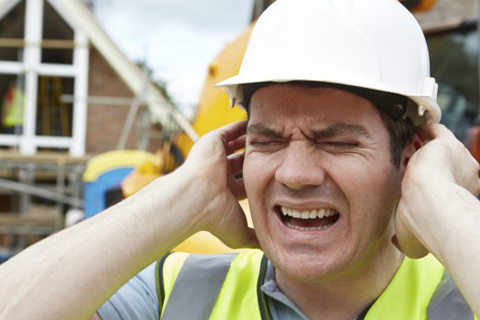For workplaces where noise may be considered excessively high, it is prudent to conduct a noise survey to identify sources and personnel that may be over exposed to noise. A good noise survey will pave the way for protecting workers and designing engineering controls. If subjected workers are exposed in excess of 85dBA, they become part of a hearing conservation program as stipulated by OSHA. The hearing conservation requires worker training, engineering controls, administrative controls, and personal protective equipment.
REDUCING THE HAZARD
The better philosophy is to reduce the hazard at the source rather than requiring administration of workers and PPE.
- Identify stationary and mobile noise sources for their contribution to the noise environment. Sometimes this is done in a grid fashion over the entire building using a sound level meter set on A weighting, slow response.
- Determine areas where noise can interfere with communication and further compromises safety. Noise can also interfere with job performance and efficiency.
- Document sound levels of employees using noise dosimeters. A noise dosimeter is like a sound level meter; however, the dosimeter measures noise exposure based on a time weighted average, typically converted to 8 hour TWA to compare to OSHA permissible exposure limit for noise.
NOISE SURVEYS
Noise surveys are generally repeated annually or whenever changes in production machinery or when there are personnel changes. The results of the noise survey are useful for engineering controls, training, use of hearing protection, and audiometric monitoring.
- Engineering controls reduce the noise at the source and may include dampeners, vibration control, enclosures, mufflers, and various machinery modifications.
- Administrative controls include the planned replacement of noisy equipment, worker rotation, employee transfers, reducing high risk workers, and modifying work schedules.
- Training is required for all noise-exposed
employees, supervisors, and managers. Documentation should
include information about the OSHA Noise Standard 29CFR 1910.95, where the
noise hazard exists, hearing protection, and audiometric testing. Special emphasis on the outcome of noise-induced
hearing loss includes
- Hearing protection comes in foam ear plugs and ear muffs, each with their own noise reduction rating (NRR). The ear plugs should be fitted to the ear canal and the muffs need to be tight over the ear as much as possible. In very noisy environments like grounds men at airports, muffs are worn over earplugs.
- Audiometry includes the periodic testing of hearing thresholds for noise exposed workers. Audiograms are the graphic representation of hearing loss based on frequency and decibel loss. Periodic testing can show ongoing loss, those that are more sensitive to hearing loss, contributing medical conditions, and show hearing trends.
OSHA’s STANDARD
More details can be found in OSHA’s Noise standard 29CFR1910.95 and the accompanying hearing conservation program requirements.
CASELLA TO THE RESCUE
EGas Depot is a source for Casella sound level meters and
noise dosimeters. Casella boasts
durability, ease of
use, and is a favored company by many serious industrial hygienists throughout
the U.S. and worldwide. Call us for more
information at 1-833-386-9248. For
ordering online, visit us at egasdepot.com under
industrial hygiene equipment.

